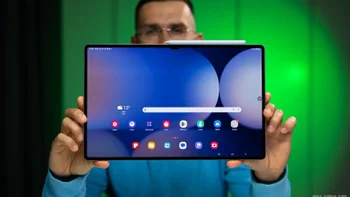The OnePlus 9 Pro display is Samsung's, here's when 1Hz and 120Hz refresh rates kick in
We may earn a commission if you make a purchase from the links on this page.

The OnePlus 9 Pro display is one of the best, if not the best mobile display we've ever tested in the 9 Pro review (we are still to run the wide color profiles on it). By all quality points that matter - near-perfect gamma and Delta E numbers, low minimum and high peak brightness, as well as reference white balance point and low reflectivity - the panel delivers outstanding numbers but that is only the Pixelworks calibration part of the story.
PhoneArena: Can you pinpoint the exact scenarios when the OnePlus 9 Pro display refresh rate would drop to 1Hz (or below 60Hz even) in real life usage?
The other part is the hardware itself, and it turns out that the 6.78" 1440 OLED panel is made by Samsung, tips The Elec, with its newfangled LTPO technology that is on the Galaxy S21 Ultra, and, eventually, will be on the iPhone 13 Pro models as well. Besides being more frugal (up to 46% less power consumption than a similar non-LTPO panel with fixed refresh rate, says Oppo), the technology allows for hardware-level control of the refresh rate, and OnePlus has used this to the extreme.
OnePlus phone maker cites 1Hz-120Hz dynamic refresh rate for the 9 Pro panel, depending on the content shown, which is the most granular refresh rate ever announced for a phone display. Samsung Display calls this Adaptive Frequency, but it only goes down to 10Hz on the S21 Ultra, while the previous record-holder, Oppo's Find X3 Pro, cites a 5Hz-120Hz range.
OnePlus 9 Pro 1Hz-120Hz display refresh rate scenarios
The source that disclosed how Samsung made the OnePlus 9 Pro display also tips the nitty gritty details about the various refresh rate use cases: "the panel drive power can be improved by variably applying the refresh rate to 120 Hz (Hz) for mobile games that require fast screen switching, 60 Hz for movies, 30 Hz for e-mails, and 10 Hz for still images."
To be frank, we noticed that in its "high dynamic" refresh rate mode, the screen stays at 120Hz most of the time, and only switches to 60Hz when playing videos or in Google Photos. Some apps run at 60Hz or 90Hz, too, but we only noticed the display dip below 60Hz refresh to 48Hz for a brief second once. That is why we asked OnePlus when would the 9 Pro display run at 1Hz, as touted in the press release, and got the following:
PhoneArena: Does OnePlus 9 have dynamic/variable refresh rate depending on the content, or simply a 60Hz/120Hz switch?
OnePlus: The refresh rate is adaptable, depending on the scenario you are in. It also goes below 60Hz, when needed. For example, when you are in your photo gallery, looking at a static image.
PhoneArena: Can you pinpoint the exact scenarios when the OnePlus 9 Pro display refresh rate would drop to 1Hz (or below 60Hz even) in real life usage?
OnePlus: It goes down to 1 Hz when you are in a scenario where you look at a static image (a photo in your gallery, for example).
As you can see, the down-to-1Hz usage scenario must be pretty specific and isolated, while most of the time the screen would run either at 60Hz or 120Hz, depending on whether you are browsing, in the interface, watching videos, or using apps.
Another somewhat strange stat is that the 120Hz refresh during our tasking browse/scroll battery test doesn't take nearly as much of a toll on the battery endurance as it should compared to the same test run at fixed 60Hz refresh. Either the LTPO display's hardware controllers switch seamlessly between lower and higher refresh rate, so as to use 120Hz only when absolutely necessary, or the technology is indeed very frugal at higher refresh rates.
In any case, gone seem to be the days of the Galaxy S20 series, whose fixed 120Hz refresh and software controls returned nearly a 30% higher toll on the battery when running the panel in the high refresh mode. Good riddance, soon there will be no point of a 60Hz/120Hz switch, and the phones will manage the refresh seamlessly all by themselves without battery life hit concerns.
Follow us on Google News






















Things that are NOT allowed:
To help keep our community safe and free from spam, we apply temporary limits to newly created accounts: